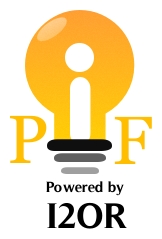Innovative Magnetron Sputtering For the Synthesis of Catalytic and Nanostructured Materials and Its Possible Using In Biomedicine and In the Fight against COVID-19 |
| ( Volume 6 Issue 12,December 2020 ) OPEN ACCESS |
| Author(s): |
Zaur Berishvili, Marina Kipiani, Irakli Kordzakhia, Guram Dekanozishvili |
| Keywords: |
|
Magnetron, synthesis, nanoparticles, reactor, agglomeration, plasma, target |
| Abstract: |
|
The demand for catalytic and nanostructured materials is growing, which contributes to the development of new methods and technologies for their synthesis. Magnetron sputtering in vacuum is one of the popular methods for this task, characterized by simplicity, flexibility of use, and high productivity; However, it has a number of disadvantages, the main of which is the inhomogeneity of the intensity of the ion bombardment of the target, which causes the formation of a narrow zone of erosion and rapid wear of the target material, respectively, inhomogeneity in the thickness and composition of the materials obtained. The innovative design and technology of planar magnetron sputtering with a rotating magnetic block presented in the article completely eliminate these and other disadvantages. Among the innovations: an original mathematical method for calculating the configuration of a closed magnetic field, which made it possible to implement a new physical mechanism of magnetron sputtering of the target surface. The improved stability of technological processes and the possibility of controlled operation of them make it possible to obtain high quality two-dimensional materials. In addition, the article presents a method developed by us for magnetron ion-plasma electrodispersion in vacuum of a bulk target material, based on the creation of a compact reactor for the synthesis of catalytic nanoparticles and three-dimensional nanostructured materials. The content of the method lies in the formation of a flow of charged liquid macrodroplets of the target material and a zone of cascade fission of macrodroplets in the volume of a toroidal magnetron plasma continuously moving above the target surface. The principle of operation of the reactor provides a wide possibility of creating conditions for the formation of monodisperse nanomaterials, homogeneous in chemical composition and with an amorphous structure. Due to the uniqueness of the presented technology, it can be tested for successful use in the context of obtaining such important materials for today, which could be effectively implemented in the fight against the covid 19 pathogen. |
 DOI :
DOI :
|
| Paper Statistics: |
| Cite this Article: |
| Click here to get all Styles of Citation using DOI of the article. |
 Click Here for
Click Here for Track Your Paper

 Call for Paper
Call for Paper
